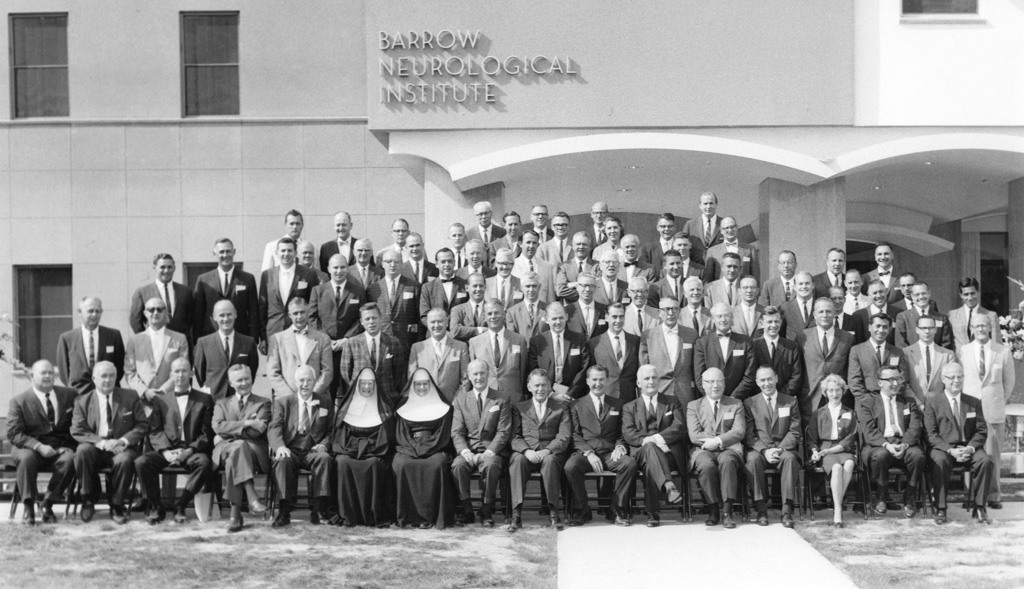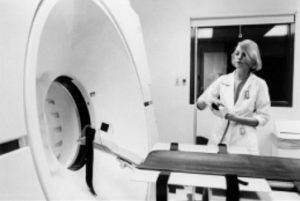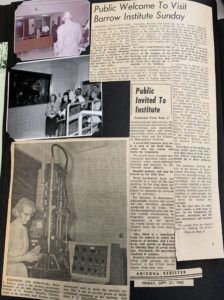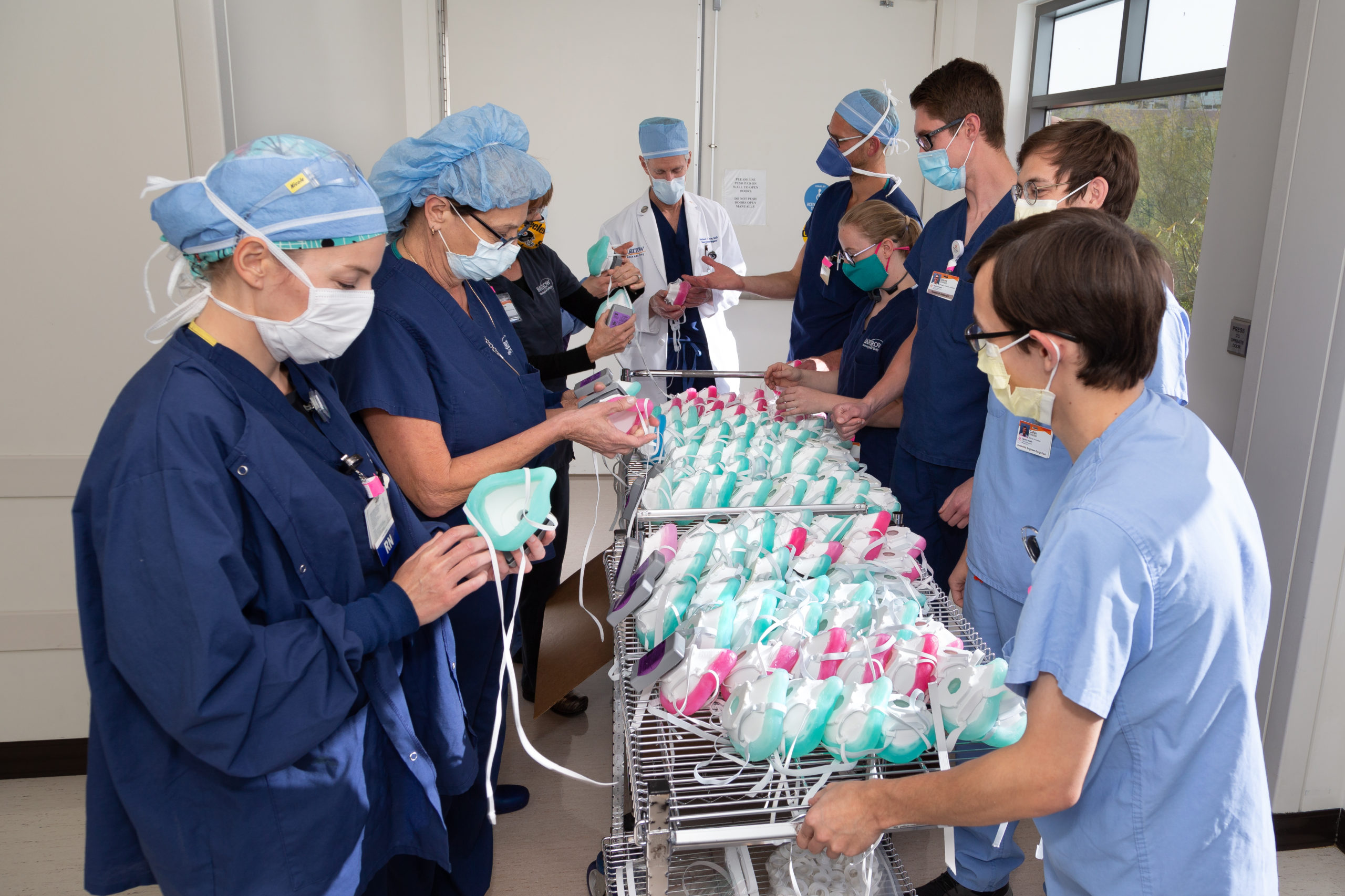
Then and Now: Barrow Celebrates 58th Anniversary
It began with a donation from Charles Barrow, a coal magnate whose wife received treatment from Dr. John Green for a malignant brain tumor. Dr. Green was Arizona’s first neurosurgeon and named the first director of the institute.
As one of only three neuroscience institutes in the country at the time, Barrow drew a variety of experts in the field. It opened with five divisions: neurology, neurosurgery, neuroradiology, neurobiology, and neuropathology.
Barrow reached notable milestones early on. In the 1970s, it added three stories to its original five-story wing, more than doubled its bed count, acquired the first computed tomography (CT) scanner in Phoenix, and earned the designation as the only Level 1 Trauma Center in Arizona for injuries to the head and spine.

In 1983, Dr. Robert Spetzler joined Barrow as the first J.N. Harber Chair of Neurosurgery, which was established to further research and teaching at the institute. He immediately had an impact.
That same year, he and fellow neurosurgeon Dr. Joseph Zabramski refined the cardiac standstill procedure to treat previously inoperable vascular abnormalities of the brain.
In 1985, Dr. Spetzler established the Neuroscience Publications department and the official journal of Barrow, known as the BNI Quarterly.
“He insisted that we have a Neuroscience Publications department,” said Dr. Volker Sonntag, who began operating at Barrow in 1978. “It’s very difficult to publish papers and books, but if you have an excellent publications department like we do, it makes it easier.”
The following year, Dr. Spetzler succeeded Dr. Green as director of Barrow.
“With Dr. Spetzler’s leadership, I think we really skyrocketed,” Dr. Sonntag recalled. “Barrow changed tremendously from a neighborhood, minimally known institution to having a worldwide reputation.”
During Dr. Spetzler’s tenure, Barrow opened several specialty neurology clinics, a 70,000-square-foot neuroscience research center, the largest epilepsy monitoring unit in the state, the first CyberKnife radiosurgery center in the Southwest, the first hypothalamic hamartoma program in the country, and one of the most comprehensive Parkinson’s centers in the world.

Barrow became the largest neuroscience institute in the nation with the construction of the 430,000-square-foot Neuroscience Tower, later named for Dr. Spetzler. It opened with 64 intensive-care beds, 80 acute-care beds, 11 neurosurgical suites, 48 emergency bays, six trauma bays, and three magnetic resonance imaging (MRI) suites.
Dr. Spetzler retired from surgery and his leadership role in June 2017. A committee led by Dr. Sonntag conducted an extensive national search for Dr. Spetzler’s successor and ultimately chose Dr. Michael Lawton—a former Barrow resident who had built a large cerebrovascular practice in California.
With Dr. Lawton at the helm, Barrow remains at the forefront of neurological patient care, research, and education. The hospital continues to expand, with the opening of a 32-bed neuro-telemetry unit in 2018 and work beginning on the Neuroplex in 2019. The five-story, 122-square-foot building is expected to open in spring 2021 and will serve as the heart of the Institute.
Barrow continues to offer the latest technologies to patients, including the world’s first ZAP-X radiosurgery system to treat brain tumors, a robot developed by Barrow neurosurgeons to improve precision in spine surgery, and a mobile stroke unit to rapidly treat stroke patients in the field.
Two new research centers have opened to translate laboratory studies into new bedside therapies: the Barrow Aneurysm and AVM Research Center and the Ivy Brain Tumor Center. Also taking shape is the Barrow Artificial Intelligence Center, which aims to transform the speed and accuracy of neurological diagnoses and treatment.
Barrow continues to lead in academics, with physicians and scientists regularly publishing journal articles and book chapters.

It also remains an institution where barriers to innovation are removed and pioneering advances in medicine are made.
In 2019, Barrow partnered with Arizona State University to develop a new class of physician-engineers, who will utilize science, technology, and design to develop new therapies and medical devices to improve patient outcomes.
When the World Health Organization declared the novel coronavirus a pandemic and medical centers around the country began reporting a personal protective equipment (PPE) shortage, the Barrow Innovation Center sprang into action. The 3D printers normally used for printing models of the spine and skull began rapidly manufacturing thousands of reusable P100 masks.
Among the first individuals to receive the masks were the nurses in the Neuroscience Intensive Care Unit, which became the primary COVID-19 unit for St. Joseph’s Hospital and Medical Center.
“In the end, it is the excellence of our talented care providers that makes Barrow so special,” Dr. Lawton said. “Leaders and innovators in neurology, neurosurgery, neuroradiology, neuro-rehabilitation, and neuropsychology make us who we are today. As we head toward our 60th anniversary, I am certain that our stature in the global neurosciences community will continue to rise as we embrace our creed: accept challenges, reject norms, and push boundaries.”
Here’s a look at some of the milestones at Barrow over the years:
[slideshow id=50258 size=large align=center]
